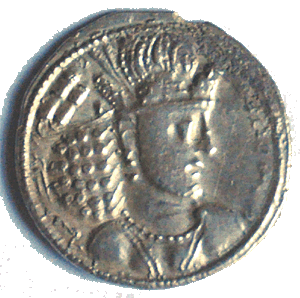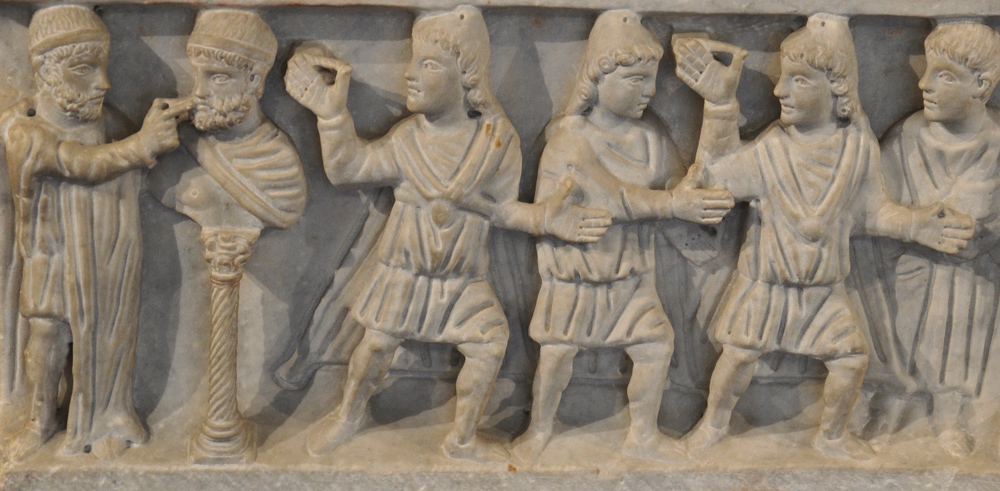
(309-379 A.D.)
The Sarcophagus of Adelphia: Detail, Shadrach, Mishach, and Abednego

Usually the three Jewish youths of Daniel 3 are shown in the fiery furnace reciting the great prayers detailed in that chapter, but here they commit the crime that led to their punishment: King Nebuchadnezzar had had a golden statue made and ordered that everyone in the land must worship it. These young Jews refused. We see them here making "I'm outta here" gestures to the King and his idol. The idol is clearly an image of Nebuchadnezzar himself. This would most likely be an allusion to the recently discarded Roman practice of emperor-worship. As Jensen explains, "A number of scenes in early Christian art illustrate this story, making it a visual exhortation to resist idolatry" (Jensen, 55-57).
The youths wear the same Phrygian caps and short tunics that we also see on the Magi in the same register, but with military boots and medals to signify their status as members of the King's court.

(309-379 A.D.)
In Daniel 3:92 Nebuchadnezzar looks into the furnace and says he sees not three men but four, "and the form of the fourth is like the Son of God." It would make sense, then, for the man on the far right of this scene to be that fourth person, but all the other images of Jesus on this sarcophagus give him noticeably longer hair than this man has. Perhaps he represents the accusers who told Nebuchadnezzar about the youths' refusal.
The artist could not have known what Chaldean kings wore on their heads ten centuries before, but the crowns on Nebuchadnezzar and his idol bear some vague resemblance to the crown of the Sassanid king ruling at the time of the sarcophagus.
View this image in full resolution.
View the entire sarcophagus.
Read more about the three youths.
Photographed at the Syracuse Archeological Museum, Sicily, by Richard Stracke, shared under Attribution-NonCommercial-ShareAlike license.